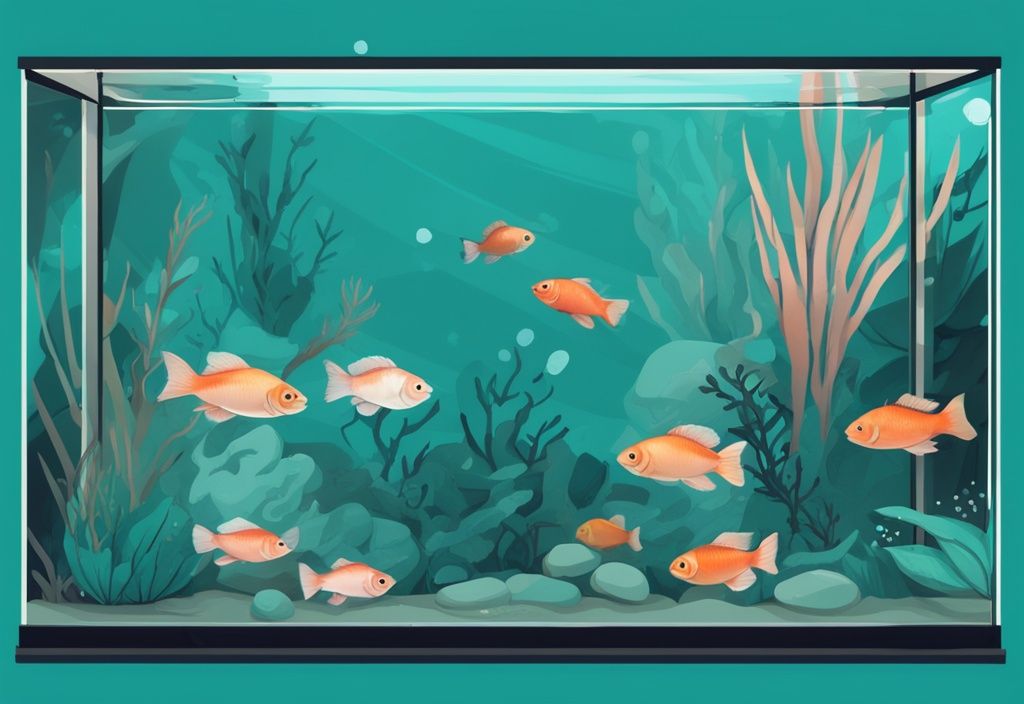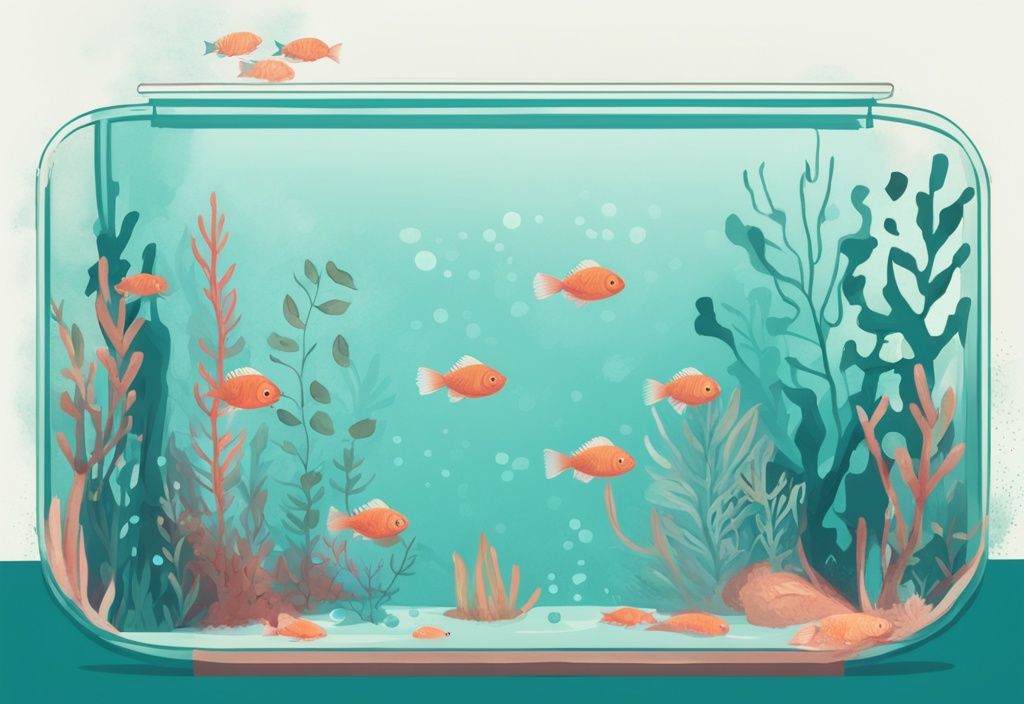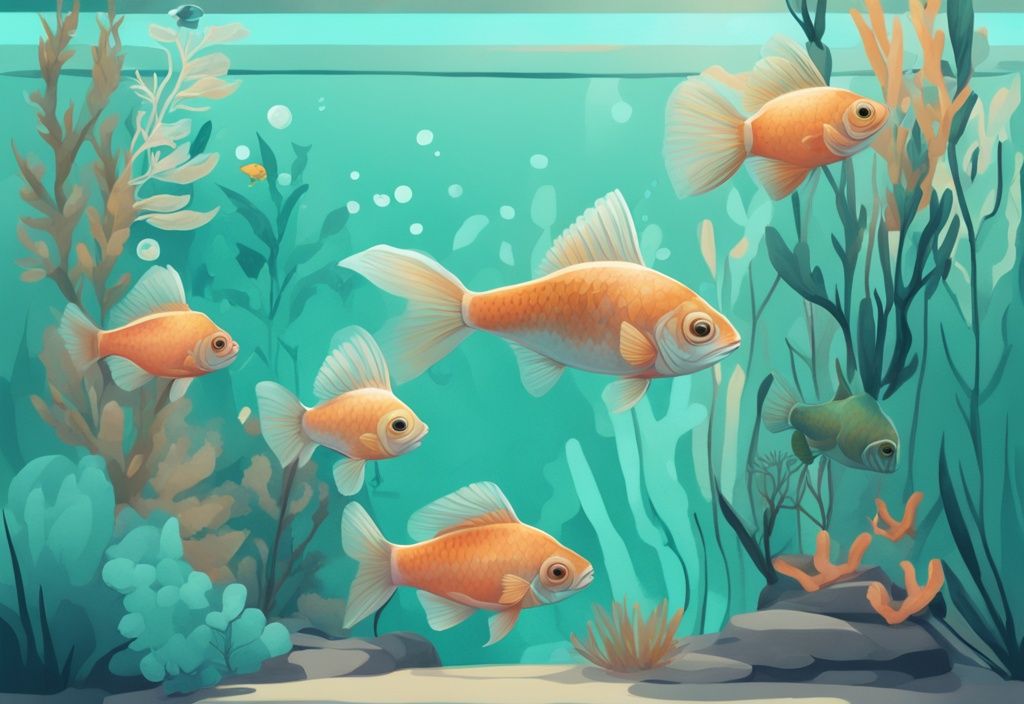Are you venturing into the fascinating realm of fishkeeping? As a marine biologist for over two decades, I can affirm that selecting the right fish is the cornerstone of a successful small tank agenda. Especially, when your space is inherently limited, the best choices are paramount to prevent packed conditions and ensure the wellness of your potential tank occupants.
In this comprehensive guide, we traverse the path of discovering the best fish for beginners for a small tank. The journey starts with understanding the vital care needs of different species, then transitions into creating a harmonious, sustainable ecosystem in your compact water-world.
So let’s plunge in, as we unveil top fish options and indispensable pointers to kick-start your hobby in fishkeeping with a splash. From meticulous selection to maintaining the perfect balance in your tank, this guide will make you feel prepared and excited about your new marine endeavor.
Choosing Your First Fish for a Small Tank
Choosing the right fish for a small tank can make your first foray into fishkeeping a rewarding experience. Factors such as tank size, compatibility, and care requirements play a significant role in ensuring your aquatic pets thrive.
Factors to Consider
Tank Size and Space Requirements
Small tanks, typically ranging from 5 to 15 gallons, provide a snug environment for beginner aquarists but come with specific spatial limitations. Understanding the minimum tank size for each fish species is crucial for creating a healthy, stress-free habitat.
For example, Betta fish are resilient and can flourish in tanks as small as 2 gallons. Their vibrant colors and relatively low-maintenance nature make them a popular choice for beginners. On the other hand, Neon Tetras require at least a 10-gallon tank due to their active swimming and schooling behaviors. This ensures they have ample space to roam, fostering a healthy and stimulating environment for them.
Compatibility and Behavior
When selecting the best fish for beginners for a small tank, it is essential to focus on compatibility and behavior. Peaceful breeds with low bioloads are ideal, as they minimize stress and avoid territorial skirmishes.
Consider schooling fish like Neon Tetras and Dwarf Corydoras. These species thrive in groups of 4-6 or more, offering a sense of security and social interaction. Conversely, Betta fish are more territorial and prefer solitary living, making them suitable for smaller, individual tanks. Knowing these behavioral traits helps in crafting a balanced, serene aquatic ecosystem.
Maintenance and Care Needs
Whether you’re a novice or an experienced aquarist, understanding the specific care requirements for your chosen fish is paramount. This includes knowledge of their dietary needs, ideal temperature ranges, and preferred pH levels.
Regular water changes and high-quality filtration are particularly crucial for maintaining optimal water quality in small tanks. Frequent monitoring of parameters such as ammonia, nitrite, and nitrate levels is necessary to prevent potential health issues. By being diligent in tank maintenance, you help ensure a healthy environment for your fish, making it easier for beginners to succeed in fishkeeping.
Top Fish that Are Ideal for Beginners with Small Tanks
When it comes to setting up a small tank, choosing the right species is essential. Here, you’ll find a curated list of the best fish for beginners with a small tank, based on hardiness, tank requirements, and ease of care.
Betta Fish (Betta Splendens)
Betta fish, often recognized as Siamese fighting fish, are a popular choice among novices. These vibrant and colorful fish thrive in small tanks, with a minimum of 2 gallons recommended. Unlike many other species, Bettas can be kept solo, easing compatibility concerns. However, ensure the tank is heated to maintain temperatures between 78-82 degrees Fahrenheit, as these fish thrive in warmer waters. While one male Betta per tank is ideal, females can coexist in larger setups, known as sororities.

Neon Tetras
Neon Tetras are small, peaceful fish that are perfect for beginner aquarists. Requiring a minimum tank size of 10 gallons, these vibrant fish should be kept in schools of six or more. Their hardy nature and striking colors make them a favorite among beginners. Neon Tetras shine in densely planted aquariums, where their schooling behavior and shimmering stripes create a lively display.
Guppies
Guppies are another excellent option for those starting with small aquariums. These hardy and adaptable fish can thrive in tanks as small as 5 gallons. Guppies come in a variety of colors and tail shapes, adding visual interest to any tank. They are social fish, best kept in groups, so maintaining the right male-to-female ratio is essential to reduce stress and ensure harmony. Their ease of care and versatility make Guppies a top choice for beginners.
Dwarf Corydoras
Dwarf Corydoras are small, social fish that add a lot of activity to the bottom of your tank. Ideal for tanks of at least 10 gallons, they should be kept in groups of four or more. Known for their scavenging abilities, Dwarf Corydoras help keep the tank clean by eating leftover food and debris. Their peaceful nature and engaging behavior make them a favorite among beginners looking for a clean and lively environment.
Platies
Platies are vibrant and hardy fish that enhance any small tank with their splash of color. They require a minimum tank size of 10 gallons and are easy to care for and breed, which is perfect for beginners interested in fish breeding. Their peaceful nature makes them compatible with other community tank species. Platies thrive in a variety of water conditions, making them one of the best fish for beginners seeking to maintain a balanced and beautiful tank.
Maintaining Your Small Tank and Its Inhabitants
Caring for a small tank and ensuring the well-being of its inhabitants encompasses several crucial aspects, including setting up the nitrogen cycle, maintaining water quality, feeding routines, regular cleaning, and incorporating live plants. These steps foster a sustainable and healthy environment suitable for the best fish for beginners for a small tank.
Nitrogen Cycle and Tank Setup
Establishing the nitrogen cycle is crucial before introducing any fish to the tank. Think of the nitrogen cycle as your tank’s very own internal cleaning crew, transforming harmful ammonia into nitrite and then into less harmful nitrate. This cycle guarantees a safe haven for the best fish for beginners for a small tank.
Incorporating the best plants for fish tanks can also enhance the nitrogen cycle by absorbing excess nutrients. To expedite this transformative process, consider using beneficial bacteria supplements. Regularly test the water for ammonia, nitrite, and nitrate levels to monitor the cycle’s progress. This creates a sanctuary where your aquatic friends can thrive.
Filtration System and Water Quality
A high-quality filter is the cornerstone of maintaining pristine water quality in a small tank, vital for the well-being of the best fish for beginners. Opt for a filter that provides effective mechanical, chemical, and biological filtration tailored to your tank’s size.
Weekly water changes of 10-20% are essential. These changes prevent the build-up of harmful substances and ensure a stable, healthy environment for your fish.
Feeding Schedules and Recommendations
Feeding the best fish for beginners in a small tank is artful precision. Provide small amounts of food once or twice daily to avoid overfeeding, which can cause water contamination and health issues.
Use high-quality fish food designed for the specific species’ needs. Be vigilant about promptly removing any uneaten food to maintain a clean tank and prevent water quality degradation.

Regular Tank Cleaning
A clean tank is a happy tank. Regularly clean both the tank walls and substrate to prevent algae buildup and debris accumulation. Utilize a gravel vacuum for thorough substrate cleaning.
Additionally, ensure all equipment, such as filters and heaters, is functioning optimally. This supports the best fish for beginners in a small tank, providing them a satisfying and healthy living environment.
Including Live Plants in Your Tank
Incorporating live plants into your tank offers a multitude of benefits for both the environment and your fish. These green wonders help absorb nitrates, aiding in water quality maintenance. They also provide natural shelter, creating a more inviting habitat for your fish.
For aquarists just starting out, beginner-friendly plants like Java Moss, Anubias, and Java Fern are ideal. These plants are not only easy to care for but can thrive in a variety of water conditions, making them excellent companions for the best fish for beginners in a small tank.
Common FAQ on Keeping Fish in a Small Tank
Have you ever wondered how to set up and maintain a small tank successfully? Below are answers to some frequently asked questions that can help you manage a compact aquatic environment effectively.
Which fish are best for beginners with a small tank?
For those just starting with a small tank, consider Betta Fish, Guppies, Neon Tetras, Dwarf Corydoras, and Platies. These species are relatively hardy and forgiving, making them excellent for beginners. They’re easy to care for and adapt well to smaller living spaces, ensuring you can enjoy an engaging aquarium without a steep learning curve.
How many fish can I place in a small tank?
It’s best to follow the general rule of 1 inch of fish per gallon of water. When deciding on the fish, think about their adult size and the space they’ll need to swim. This practice helps avoid overcrowding and ensures a healthy environment, allowing your fish to thrive in their underwater home.
Is it necessary to have a filter in a small tank?
Absolutely. A good filter is essential in any small tank setup. It plays a crucial role in maintaining water quality, managing waste, and keeping harmful substances like ammonia and nitrites at bay. Essentially, a filter supports a stable and thriving miniature ecosystem, which is vital for your fish’s well-being.
How frequently should I change water in my tank?
Performing regular 10-20% water changes weekly is highly recommended. These routine changes help keep your water parameters stable, maintaining a clean and healthy environment for your fish. Regular maintenance notably reduces the risk of diseases and harmful substances, ensuring your aquatic friends can flourish.

Can different species of fish cohabit in a small tank?
Yes, different species can certainly cohabit in a small tank, provided they are compatible in terms of temperament, size, and water requirements. Before mixing species, it’s important to research their compatibility to foster a harmonious underwater community. Proper planning leads to a balanced and peaceful tank environment.
Final Thoughts on Maintaining a Healthy Small Fish Tank
A small fish tank, when maintained properly, can bring immense joy and beauty to any space, especially for beginners. While they require dedication and care, the rewards are undoubtedly worth the effort.
Regular monitoring and maintenance are paramount. Consistently checking water parameters like ammonia, nitrite, and nitrate levels ensures a stable and healthy environment for your fish. Diligent upkeep, such as routine water changes, gravel cleaning, and equipment checks, plays a significant role in maintaining optimal conditions.
Education is another cornerstone of successful fishkeeping. Understanding the specific needs of each species, from their dietary requirements to preferred tank conditions, helps in providing the best possible care. Research and learning are continuous processes in the journey of an aquarist, ensuring informed decisions and better outcomes.
Patience and diligence are virtues that cannot be overstressed. Fishkeeping is a gradual process where immediate results are seldom seen. From establishing the nitrogen cycle to observing the growth and behavior of your fish, a calm and patient approach leads to long-term success and a thriving aquarium.
In summary, a small tank can be an enchanting and fulfilling experience for beginners. The keys to success lie in regular maintenance, comprehensive knowledge, and consistent patience. By focusing on these aspects, you’ll create a vibrant and harmonious aquarium, home to the best fish for beginners for a small tank. This journey, though requiring commitment, brings the joy of a healthy and lively underwater world right into your space.
Optimized Content:
Final Thoughts on Maintaining a Healthy Small Fish Tank
A small fish tank, when maintained properly, can bring immense joy and beauty to any space, especially for beginners. The journey of keeping a small aquarium, though demanding dedication, is deeply rewarding.
Regular monitoring and maintenance are crucial. By consistently checking water parameters such as ammonia, nitrite, and nitrate levels, you ensure a stable and healthy environment for your fish. Routine water changes, gravel cleaning, and equipment checks are essential components of diligent upkeep. For those interested in enhancing water circulation, learning about the best aquarium wave makers can be highly beneficial. Education is another cornerstone of successful fishkeeping. Understanding each species’ specific needs—from dietary requirements to preferred tank conditions—allows you to provide the best possible care. The journey of an aquarist involves continuous research and learning, leading to informed decisions and better outcomes.
Patience and diligence are virtues that cannot be overstressed. Fishkeeping is a gradual process, often lacking immediate results. From establishing the nitrogen cycle to observing fish growth and behavior, a calm and patient approach fosters long-term success and a thriving aquarium.
In summary, maintaining a small tank is an enchanting and fulfilling experience for beginners. Success hinges on regular maintenance, comprehensive knowledge, and consistent patience. By focusing on these aspects, you create a vibrant and harmonious aquarium, home to the best fish for beginners for a small tank. This journey, while requiring commitment, brings the joy of a healthy and lively underwater world right into your space.
